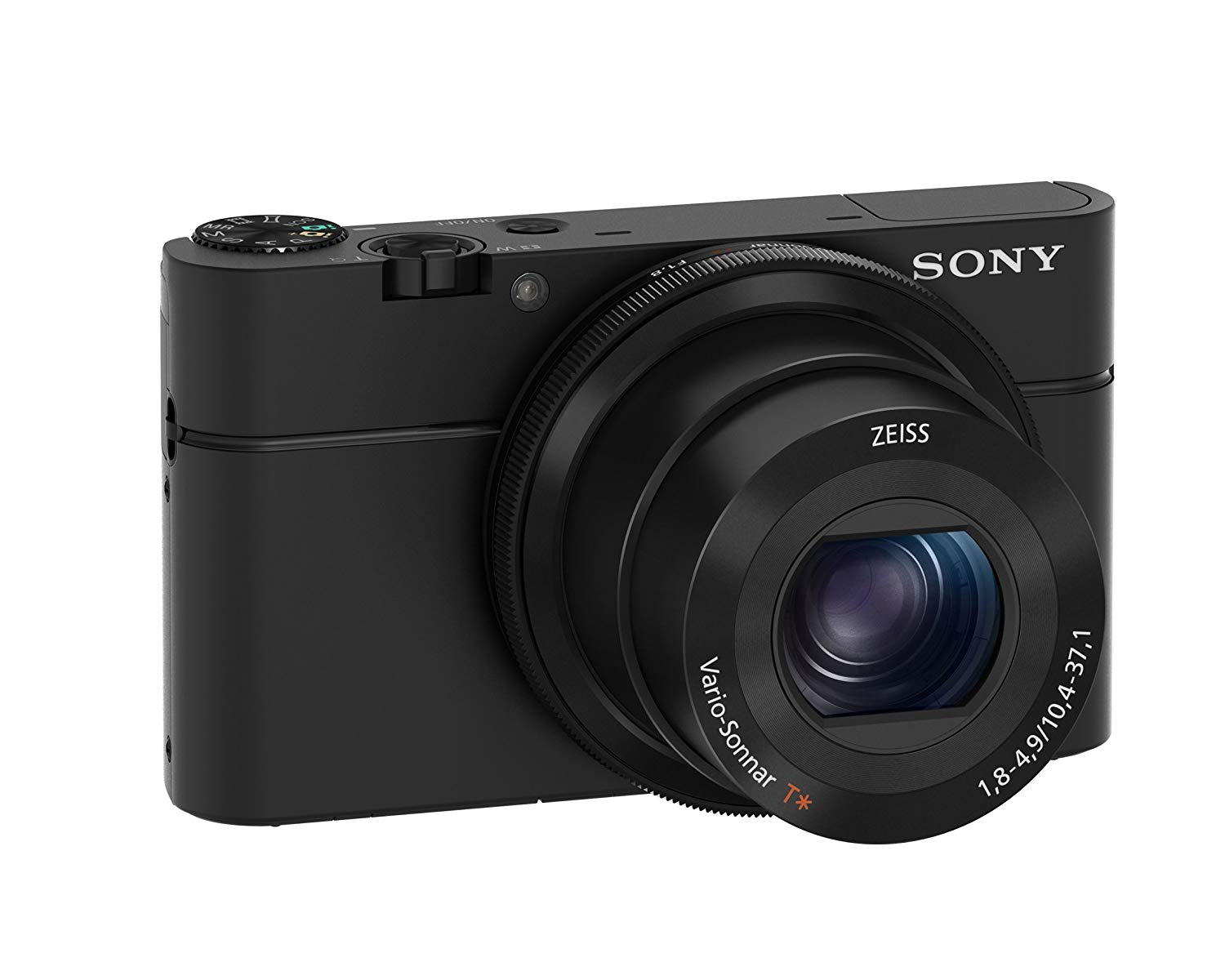
Sony has a performing and versatile product line with the RX100. This product line includes six cameras with sensors designed to capture amazing photographs in low-light settings and other innovative features. Here is what you need to know about the RX100 line.
The RX100 line from Sony is a popular line of point and shoot cameras. These cameras are suitable for amateur and professional photographers thanks to their high-quality sensor and wide range of features. These are six models in this line that we compared to help you choose the best Sony RX100 camera.
What Is The Sony RX100?
The RX100 line is sometimes called the Cyber Shot line. The first iteration of this compact camera was introduced in 2012.
Sony released five additional cameras over the years. The different models are differentiated with roman numerals. Each model has new features or improvements compared to the previous one.
The RX100 and RX100 II are great entry-level cameras for amateur photographers. These models make excellent point and shoot cameras and will allow photographers to start exploring manual features.
Being able to upgrade to a more recent model with additional feature is interesting since the learning curve won’t be too steep.
The Original Sony RX100 and RX100 II
The original RX100 model features all the core elements of the Cyber Shot product line. The CMOS sensor allows for highly detailed images. The ISO range goes from 125 to 64,000. This high ISO range allows you to take photographs in low-light settings while the 125 ISO number means you can get a fine grain in optimal light settings.
The lens focal length or zoom ranges from 10.4 to 31.1mm, and the camera has a large lens aperture of f/1.8 to f/4.9, which makes it very versatile.
There is a built-in flash, a fast shutter speed of 1/2,000 seconds, and a shooting speed of 10fps if you select the burst mode. You can also use this camera to record videos.
The main change you will notice with the RX100 II is that the camera can communicate with other devices via WiFi. This feature makes transferring your photographs to a computer easier. You can also tilt the LCD screen of the camera.
The second iteration of the RX100 has two improvements that are designed to help you take better pictures in low-light settings. The ISO range is increased to 160 to 12,800, and the sensor is back-illuminated. You can also purchase an RX100 II with an electronic viewfinder, but keep in mind that this feature is optional.
The Sony RX100 III And IV
The RX100 III features the same back-illuminated sensor you will find on the RX100 II model. The ISO range is slightly broader since it goes from 125 to 12,800. The lower ISO value will refine the grain of your photographs in optimal light settings.
The focal length ranges from 8.8 to 25.7mm. The zoom capacity is reduced compared to previous models, but you will benefit from a broader angle of view.
The RX100 III has a large lens aperture with specs ranging from f/1.8 to f/2.8, but the smaller aperture setting available on previous models is missing. The electronic viewfinder is no longer an optional feature and is standard on all third-generation models.
This model also introduced the slow-motion video feature.
The RX100 IV model uses a different sensor. The stacked CMOS sensor uses a layer to collect data and another layer to process this data. This speeds up the process of capturing a high-resolution image.
The shutter speed has been increased to match this faster sensor. The shutter speed is now 1/32,000 seconds, which is a significant difference compared to previous models.
There is also a higher shooting speed of 16fps. The ISO, focal length and lens aperture are the same as on the III model.
There are a few additional changes worth mentioning, including an anti-distortion filter added to the shutter, a higher resolution for the electronic viewfinder, and the ability to record 4K video.
The Sony RX100 V and VI
The RX100 V model uses the same stacked CMOS sensor you will find on the previous model. The ISO range, lens focal length, lens aperture, shutter speed, and electronic viewfinder have the same specs as on the previous model.
The main difference is the introduction of autofocus points. The RX100 V has 315 autofocus points that you can manually set or use to have the camera automatically adjust the focus in an extremely precise manner.
The high number of autofocus points means this is one of the best point and shoot cameras for capturing movement. You can also manually adjust these points to set the focus on specific areas, for instance, when composing a portrait.
The shooting speed is also higher at 24fps, and the buffer size of the fifth-generation RX100 has been increased, which will make a difference when you record video.
The RX100 VI has an increased lens focal length compared to the previous model. The new lens focal length ranges from 8.8 to 74mm.
The lens aperture range is also wider since it goes from f/2.8 to f/4.5. The sixth-generation RX100 is the first one to feature an LCD touchscreen
What Makes The RX100 Unique?
The RX100 or Cyber Shot product line stands out due to the high-quality photographs you can take with these cameras. The ability to take excellent pictures in low-light conditions is another standout feature.

The sensors used in these cameras tend to be larger than in comparable cameras. This results in more detailed images, even in low-light conditions. The sensor resolution is either 20.1 or 20.2 megapixels depending on the model.
In the more recent iterations of the product line, the stacked sensor allows the camera to capture details faster, which is ideal if you are capturing movement or want to use a fast shutter speed for another reason.
Some models feature a large lens aperture of f/1.8. This feature helps you capture detailed photographs in low-light settings when combined with the fast shutter speed. It is also useful for creating a blurred background effect.
The zoom capability is impressive on the RX100 VI model since it goes up to 74mm. It is more limited but still adapted to most settings on the other models.
The resolution of the electronic viewfinder is another interesting feature for the most recent models of the line. If you are looking at the RX100 V or VI, the autofocus points are an interesting addition to the cameras.
We like this product line because the six cameras have varying degrees of performance. You can easily find a point and shoot camera adapted to your budget. The first iterations of the RX100 camera are affordable and very performing, while the more recent models have everything a professional photographer would need.
Pricing
The official Sony store on Amazon has the best prices for these cameras:
- You can get the original RX100 for $350.
- The RX100 II is available for $550.
- The RX100 III sells for $650.
- The Sony RX100 IV is available for $800.
- You will need to spend $1,000 to order the RX100 V.
- The RX100 VI is the most expensive camera in this product line at $1,200.
Public Perception Of The Sony RX100
The original RX100 model has a rating of 4.2 out of 5 stars on Amazon. People love the quality of the photographs and the long battery life of the camera.
Shoppers often mention that this is the perfect point and shoot camera for their needs. It is performing, they take great pictures with very little experience, and don’t need to go through a complex set-up for each shot.
The RX100 II model has received a rating of 4.1 out of 5 stars. Reviewers usually mention how much they love the image quality and the WiFi connectivity feature.
Some reviewers note that there are significant improvements compared to the first model. The results are closer to what one would expect from a professional camera.
There are some mixed reviews that say that there are better options in this price range for those who want a fast shutter speed.
The RX100 III has a rating of 4.3 out of 5 stars. The quality of the images is what is most often mentioned in the reviews. Shoppers love the electronic viewfinder that is introduced with this iteration of the RX100.
There are a few negative reviews that mention the menus of the camera since navigation isn’t intuitive. Some shoppers also ran into issues with the shutter getting stuck.
The reviews for the RX100 IV are very positive with an average rating of 4.1 out of 5 stars. Some reviews mention that the navigation menu has been redesigned with this model and is more intuitive.
This camera takes excellent photographs, especially in low-light settings. People love that they can get professional results with this camera but feel that the 4K video capability is limited. Some reviews talk about the camera overheating with the 4K video is used.
The RX100 V has an average rating of 4.0 out of 5 stars. The slightly lower rating is mostly due to the limited battery life on this model. The autofocus points and high image quality seem to drain the battery faster.
Some professional photographers have given excellent reviews for this camera. The image quality is amazing, but some wish the camera were more responsive in terms of shutter speed. Some reviews mention that the camera tends to overheat with the 4K video mode is used.
Overall, if you are looking for a professional point and shoot camera in this price range, it is difficult to find a product that is more performing.
The RX100 VI has an average rating of 4.0 out of 5 stars, just like the previous model. There aren’t many reviews and ratings available since this is a fairly recent release.
Positive reviews mention the image quality and fast focus. Shoppers also love the touchscreen feature and the burst mode.
Reviewers have high expectations due to the price of the camera, and some were disappointed that the neutral density filter has been removed. This feature previously reduced the intensity of hues and light in some settings. Using a high zoom setting also results in a noticeable loss of light.
How Does The Sony RX100 Compare To Other Cameras?
We compared the RX100 product line to other point and shoot cameras.
Panasonic LUMIX FZ1000 4K Point And Shoot Camera
This Panasonic camera is an interesting alternative to the original or second-generation RX100 cameras. It has WiFi connectivity and can be remote-controlled from a laptop.
The 16x zoom is not as performing as what you will find with the RX100, and the sensor resolution is 10.1 megapixels, which corresponds to half of the resolution of the sensor used in the RX100.
The bright lens and macro shot modes are interesting features that are missing from the RX100. Overall, the Panasonic LUMIX FZ1000 is a good alternative if you want a lower price tag and don’t need a high zoom or sensor resolution.
Canon PowerShot G9 X Mark II
This camera uses a 20.1 megapixel CMOS sensor that is similar to what you will find in the RX100. It has a compact and lightweight design.
We like this camera because it features a touchscreen and is equipped with WiFi and Bluetooth connectivity. The 3x zoom is below the performance of the RX100, but the touchscreen and performing sensor make the Canon a viable alternative if you are shopping on a budget. It also has an average rating of 4.4 out of 5 stars on Amazon.
What We Think
The Sony RX100 is an excellent line of point and shoot cameras. There are six cameras to choose from and you should be able to find a product that matches your budget and needs as a photographer.
The older models are interesting due to their affordable prices and performing sensors. These older cameras are lightweight and deliver professional photographs.
The downside of the newer models is that the weight increases and the battery life decreases. However, these are some of the most performing point and shoot cameras on the market due to the sensor specs and autofocus points.
We recommend that you invest in a protective case, additional battery, and tripod if you decide to get an RX100.
Coupons And Deals
Best Buy currently has deals on the RX100 line. The prices are comparable to what you will find on Amazon, but you will get a Shutterfly gift card with your purchase. The RX100 III comes with a free memory card and battery.
The RX100 line is an excellent choice if you want a performing camera that delivers high-quality photographs. Take the time to compare the different generations of the RX100 to figure out which camera is adapted to your budget and needs.
Share:








